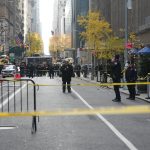On the opening day of Art Basel Miami Beach, an Uber driver with a Tesla took me from the convention center to Star Island, a three-mile trip that lasted nearly an hour in traffic. A man-made blip of land between mainland and beach, built by the Army, and home, at one time or another, to the likes of Shaq, Diddy, A-Rod, and Gloria Estefan, the island was eerily quiet compared to the madness of an art fair on its first VIP day, and completely dark by 6 p.m. I had ventured to the semiprivate locale to meet with Steven Galanis, the cofounder and CEO of Cameo, the start-up that allows users to purchase customized video messages from celebrities. Last week Matt Gaetz joined, and President Trump’s scuttled pick for attorney general will wish your conservative dad happy birthday in a MAGA hat for upwards of $500.
I’ve known Galanis since his pre-Cameo days. We were the same year at Duke, and I profiled him for the college magazine. But I hadn’t seen him since he moved from his childhood home of Chicago to Miami, a city he never visited growing up, and I had questions perhaps only a whip-smart, highly connected Miami tech-world guy like Galanis could answer. How has the town so rapidly shifted from a vacation haven with an undercurrent of noir-ish criminal intrigue—Carl Hiaasen, Miami Vice, “a sunny place for shady people,” etc.—to one of the country’s biggest tech and crypto hubs? And what’s going to happen now that the sector is once again reaching a crescendo?
And by that I mean…hitting a crescendo this exact week. On Wednesday night, a few hours after Art Basel Miami Beach had officially opened, sitting at the posh Greek spot Mandolin, my dinner mates felt the distinct buzz of a New York Times push alert on their phones. Bitcoin had hit an all-time high price of $100,000.
“Oh great, I’m rich again,” said one digital art collector sitting with us.
Galanis gave me his secret history of Miami tech and crypto mania. On December 4, 2020, the venture capitalist Delian Asparouhov posted, “ok guys hear me out, what if we move silicon valley to miami,” and was shocked to see that Miami mayor Francis Suarez responded within hours, asking, “How can I help?” Just over a week later, the venture capitalist Shervin Pishevar hosted a dinner at his house on Star Island, COVID-tested and outdoors, with Suarez, along with Reddit cofounder Alexis Ohanian, Peter Thiel associate Keith Rabois, Shutterstock founder Jon Oringer, former Uber executive Emil Michael, former Clear Standards CEO Betsy Atkins—and Galanis.
“That was kind of the primordial soup of this Miami tech ecosystem, and suddenly you have all these incredible founders and VCs that decided to move here,” Galanis told me. “I tried to draw the parallel to Chicago after the fire, when all these great minds from around the world just had this opportunity to build the next thing. And in that era of Miami, really that’s what it felt like.”
He was talking in a gigantic guesthouse next to an even bigger house, sipping an expensive rum on the rocks, the drink of Caribbean-exploring pioneers for centuries, and offered me one as well. He had flown in from New York that morning, spent all day on calls, and was headed to a box in the Kaseya Center that night to see the Miami Heat demolish LeBron James and the LA Lakers.
It’s only appropriate that the Heat are dominating the old guard of the Lakers and its aughts-era superstar these days. Miami’s been in a four-year sprint of expansion, with bankers pouring into neighborhoods like Brickell, led by another Chicago refugee turned Miami resident, Ken Griffin. (Two years ago I revealed that Griffin put his masterpieces on view at the Norton Museum of Art in Palm Beach on a long-term loan.) Paul Singer has brought his company’s headquarters down here. Blackstone and Goldman Sachs have opened offices.
And the city’s rebirth comes at a time when Art Basel Miami Beach needs it the most. The fair once held an unrivaled perch on the art world calendar as the one must-attend event between September and May. Now it’s squeezed between Basel’s own Paris fair in October and Frieze’s Los Angeles fair in February, both started in the last half-decade. It doesn’t help that the art market has been in a bit of a dip for at least the last year.
And yet the optimism in Miami this week is palpable; the general feeling amid the crypto set is that the incoming Trump administration will be very good for business.
“The whole thing is getting unshackled. You had people that were so hostile and suddenly now you’re replacing the Cabinet with people that are so bullish, and they’re holders,” Galanis said. “The second that the US treasury buys the first Bitcoin, it’s just going to explode.”
By the time the fair opened on Wednesday, the art world seemed to have caught the optimism bug. In the opening hours, tens of millions of dollars of art exchanged hands. The day before the fair opened, an adviser had stopped me on Collins Avenue and said that he was trying to tell people that the “Trump bump” was real—we didn’t quite see it at the auctions, but another few weeks out, people would be feeling flush, and it would show in Miami. Turns out this adviser was right.





GIPHY App Key not set. Please check settings